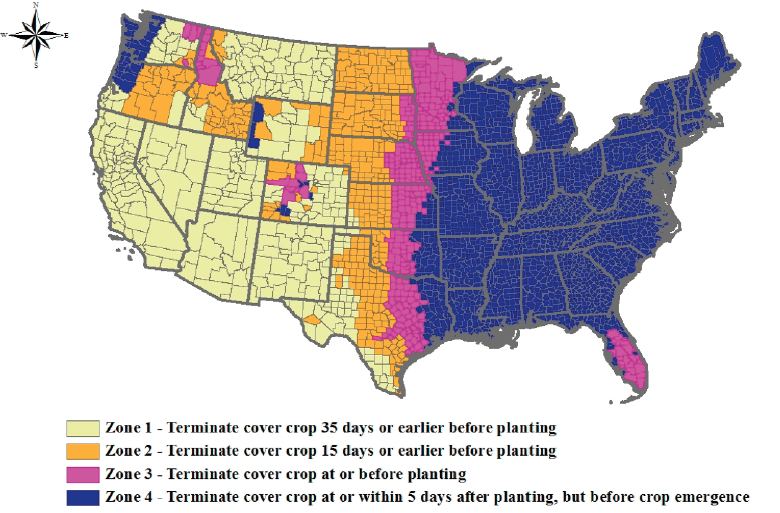The USDA’s Risk Management Agency (RMA) recently updated its “Frequently Asked Questions” section regarding crop insurance rules as they pertain to cover crops.

Ryan Stockwell, national ag program manager for the National Wildlife Federation, shared a quick summary of important policy implications of these updates:
1) The RMA clarified that haying or grazing of a cover crop will not impact prevented-planting eligibility for the subsequent insured crop as long as haying or grazing didn’t contribute to the prevented planting.
“This is an important clarification ensuring that a cover crop, or the act of haying or grazing, should not be blamed for weather-caused delays to agronomic management of the insured crop,” Stockwell says.
2) If growing conditions, such as untimely weather events, cause a delay in cover-crop termination, the RMA is now requiring producers obtain a letter from two agronomic experts attesting that the cover-crop management will not adversely affect the yields or quality of the insured crop.
“This is a significant change in policy,” Stockwell says. “Before, producers simply needed one letter from an Extension or NRCS expert obtaining guidance on how to manage/terminate the cover crop in a delayed termination situation.”
3) Some growers may be able to obtain a variance regarding which cover-crop termination zone and associated termination rules apply to their farm. Growers would still be in the same zone, Stockwell says, but would simply have different requirements applied to their farm.
4) If cover-crop termination is delayed due to weather, the waiting periods for planting (35 days for Zone 1, and 15 days for Zone 2) are not required if agronomic conditions are right for planting.
5) Cover crops on summer fallow will be considered continuous cropping. In order to be considered summer fallow, all cover crops must be terminated for a full year.
|
MORE INFORMATION • Click here to see the complete list of questions and answers published by the RMA. • To download the complete list of NRCS guidelines for cover-crop termination, click here. |







Post a comment
Report Abusive Comment